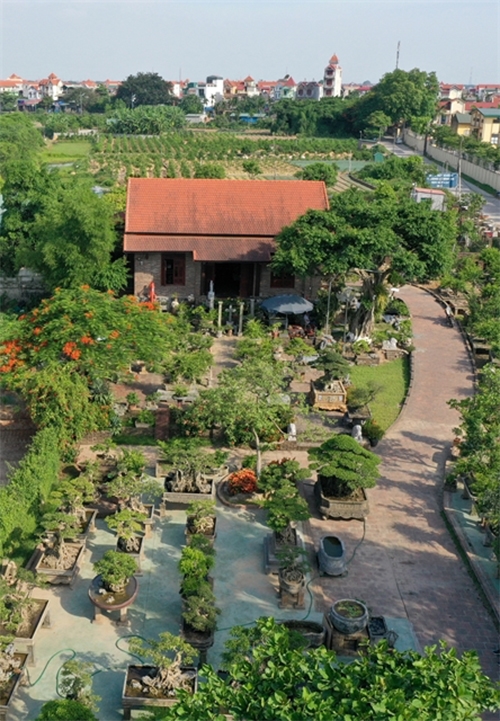For the last ten years, under the new style rural area building programme, Hanoi’s rural look has changed remarkably with improved infrastructure for both production and people’s daily life.
    |
 |
|
Growing flowers and ornamental plants helps Hong Van commune in Thuong Tin district become more liveable. (Photo courtesy of Hanoi’s Department of Agriculture and Rural Development). |
The incomes of people living in rural areas have also increased.
Particularly, in many rural areas across the city, the environmental landscape has been significantly improved with flower beds, tree-lined streets and murals, which help make the countryside more attractive and create tourism destinations for people to visit and enjoy.
In order to develop the rural economy, besides developing crops and livestock to serve the daily needs of people, Hanoi also gave priority to flowers and ornamental plants as key agriculture products.
The city also paid more attention to boosting the linkage between production and consumption, offering support policies.
As a result, flowers and ornamental plant growing areas in Hanoi increased sharply from 5,484ha in 2015 to 7,960ha in 2020.
It has recognised 11 traditional craft villages of flowers and ornamental plants including the Co Giao village; Xam Xuyen village and Noi Thon village in Thuong Tin district; Ha Loi, Lieu Tri, Dai Bai villages in Me Linh district; Phu Dong village in Gia Lam district, Tay Tuu flower village in Bac Tu Liem district, kumquat growing village in Tam Xa commune of Dong Anh District, Nhat Tan flower village and Tu Lien kumquat village in Tay Ho district.
Until now, 70 per cent of flower and ornamental plant growing areas in Hanoi are in districts of Bac Tu Liem, Me Linh, Tay Ho, Dan Phuong and Thuong Tin.
With improved quality of seeds, farming technique and advanced technologies for water, light and temperature, growers could earn on average 0.5-1.5 billion VND per hectare per year. Many farming models could generate 1.3-2.2 billion VND per hectare per year.
Nguyen Van Chi, head of Hanoi Rural Development Division, said that under the city’s programme to increase the effectiveness of the new style rural area building programme and agricultural restructuring in the 2021-2025 period, the total areas for flowers and ornamental plants are expected to increase by 8,500-9,000ha.
The city also planned to plant more trees along streets and roads to ensure 8-10sq.m of green space for each person.
Chi said that flower and ornamental plant growing villages would also offer farming tourism experiences.
Chi added that in the future, the city would work with the Ministry of Agriculture and Rural Development and other localities to review and introduce support policies for flowers and ornamental plants.
The city asked relevant agencies and districts to make plans and arrange resources to boost its flower and ornamental plants industry.
“Flowers and ornamental plants would be key products to boost local economic development, improve the environment and speed up the implementation of the new style rural area building programme,” Chi said.
Flower and ornamental plants growers’ associations are called on to coordinate with State management agencies to evaluate the price of ornamental flowers, develop planting area codes, origin traceability, and establish a digital map of ornamental flowers which would help increase information transparency, Government management and supervision.
Associations, branches and artisans recommend local State management units in the development strategy of the flower and ornamental plant industry; materials for vocational training and encourage good artisans and managers to offer training as well as share experiences.
Source: VNA